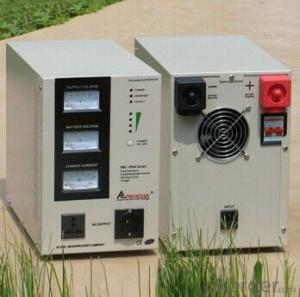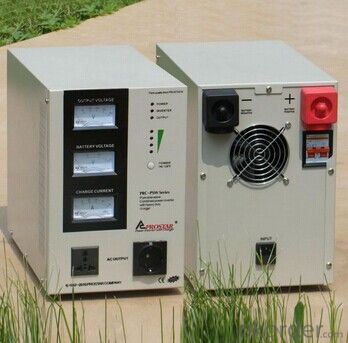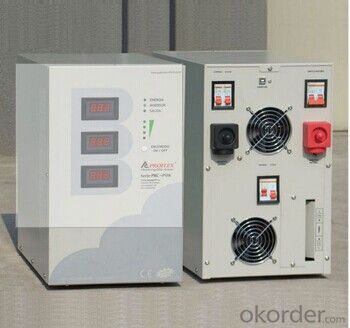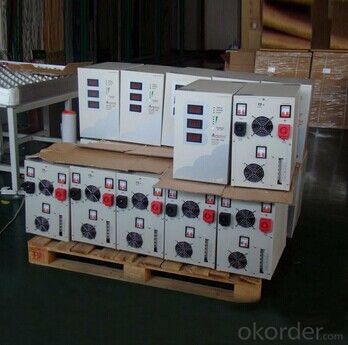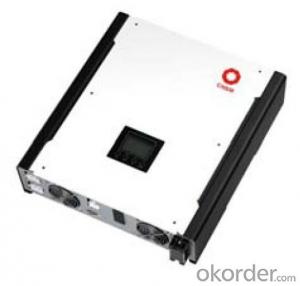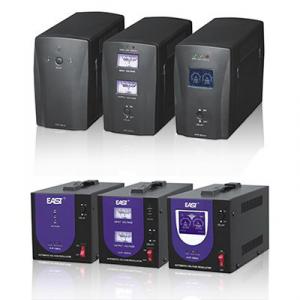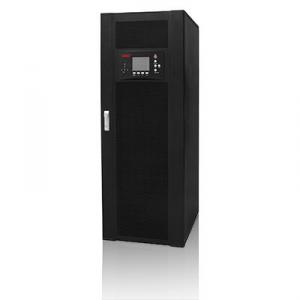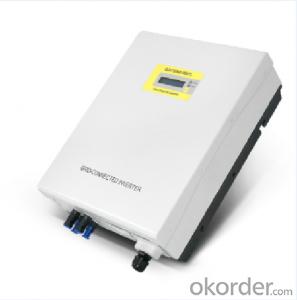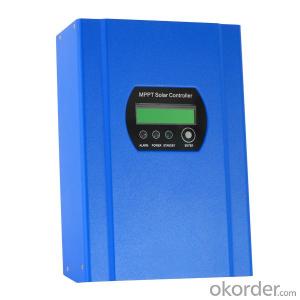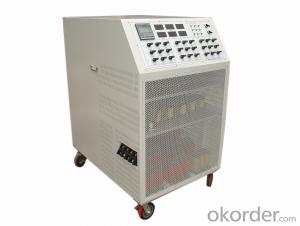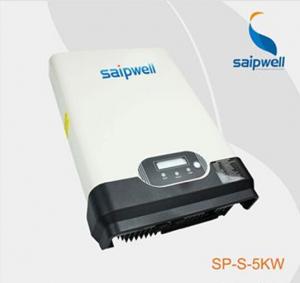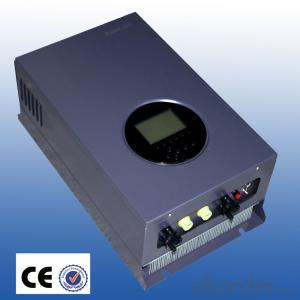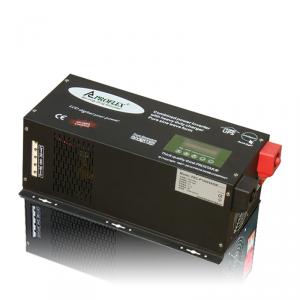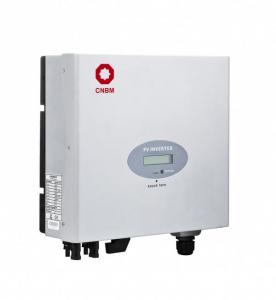Best 12V Solar Inverter Sine Wave Charger with Manual Bypass 5kW
- Loading Port:
- Tianjin
- Payment Terms:
- TT OR LC
- Min Order Qty:
- 10 pc
- Supply Capability:
- 10000 pc/month
OKorder Service Pledge
OKorder Financial Service
You Might Also Like
Specifications
Inverter sine wave charger
with AC input / output breaker
with Battery switch (breaker)
with manual bypass breaker
Automatic
5kW Inverter sine wave charger with manual bypass
Analogue meter display & digital meter display optional
Advantages
> Ultra-fast transfer time
From AC to DC less than 5ms, From DC to AC 0ms
(Routers, Switches PC, Servers and ATM machine will never re-start at Mains failure)
> Faster battery recharge time (Big charge current 30A~50A)
> Automatic tracking mains or generator input (Tracking input voltage, phase & frequency)
> AC / DC conversion waveform (Seamless connection without any spike)
> Battery equalization system (for longer battery life)
> Protection against short-circuit, low voltage, overload, over temperature and over-charge
> Low maintenance cost, Analogue meter & Digital meter Optional
Application range
Computer, Telecom, Deep Freezers, Air Conditioners, Petrol pump machines, Small Scale Industries Malls, Hotels, Restaurants, Banks, ATM Machines, Clinics, All kinds of Kitchen appliances & Home appliances, Weighing bridges,Elevators etc.
Technical specifications
| PRC-PSW SERIES | 500VA | 1000VA | 1500VA | 2000VA | 3000VA | 4000VA | 5000VA | 6250VA |
| BATTERY DC VOLTAGE | 12V | 12V/24V | 24V/48V | |||||
| INPUT AC RANGE | 160~280V / 45~55Hz | 165~260V / 45~55Hz | ||||||
| INVERTER OUTPUT | 220V ± 10% / 50Hz ± 1% | |||||||
| TRANSFER (AC LOSS) | 5ms after AC loss, automatic recovery after utility power back | |||||||
| FULL LOAD CAPACITY | 400W | 800W | 1200W | 1600W | 2400W | 3200W | 4000W | 5000W |
| WAVE DISTORTION | THD < 3% | |||||||
| OVER LOAD CAPACITY | 100% ~ 125% Keep Beeping; > 125% working 30s; >150% 1s shut down | |||||||
| OUTPUT SOCKET | 2outlets | 1outlet + terminal connectors | ||||||
| INDICATOR STATUS | Utility input with "POWER" & "BYPASS" light on | |||||||
| Utility power loss with "INVERTER" light on | ||||||||
| Connected with load "AC OUTPUT" light on | ||||||||
| Warning for battery low & over load with " ! " flashing | ||||||||
| Battery low protection, over load protection, short circuit protection with " ! " light on | ||||||||
| BATTERY CAPACITY | From top to bottom 4 indicator means 100%, 75%, 50%, 25% (" ! "Flashing) | |||||||
| CHARGE STATUS | Indicator flash change from 50% →75% → 100% every 1second means "CONSTANT CURRENT" | |||||||
| Indicator flash change from 50% →75% → 100% every 2second means "CONSTANT VOLTAGE" | ||||||||
| Indicator 50%/75%/100% 3lights on means "FLOAT CHARGE" & battery full | ||||||||
| CHARGE CURRENT | 15A | 20A | 30A/20A | 50A/30A | 70A/50A | |||
| Meter Display (OPTIONAL) | Analogue meter or Digital meter | |||||||
| RECHARGE TIME | 8~10hours | |||||||
| POWER EFFICIENCY | 80% at full load | 75% at full load | ||||||
| NOISE CONDITION | < 45dB | |||||||
| TEMPERATURE | —10°C ~ 40°C (Operation environment); —20°C ~ 50°C (Stock environment) | |||||||
| HUMIDITY | 0~95% no condensation | |||||||
| SIZE OF INVERTER | 420 x 230 x 350 mm | 500 x 280 x 430 mm | ||||||
| MEAS. AFTER PACKING | 45x26x38cm / unit | 53x31x46cm / unit | ||||||
| TYPE OF PACKAGING | Honeycomb carton | |||||||
| WEIGHT OF INVERTER | 11kg | 13kg | 16kg | 27kg | 29kg | 36kg | 38kg | 44kg |
| WEIGHT AFTER PACKAGING | 13kg | 15kg | 18kg | 29kg | 31kg | 38kg | 40kg | |


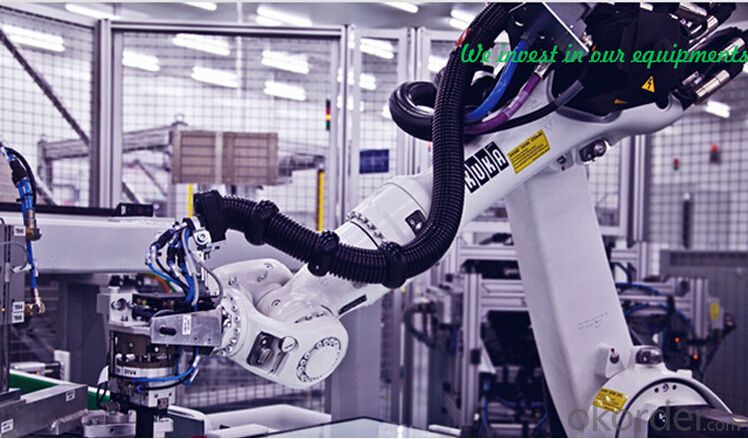
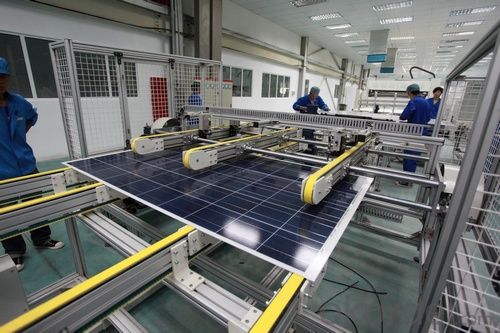
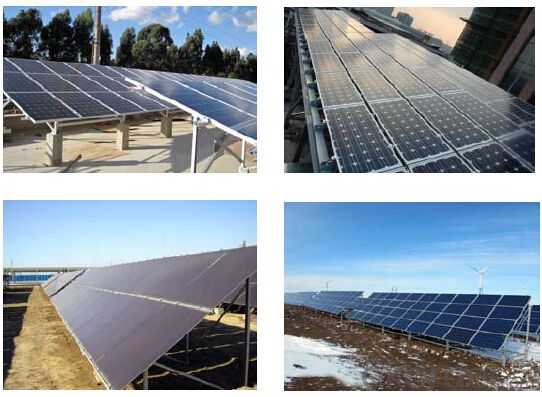
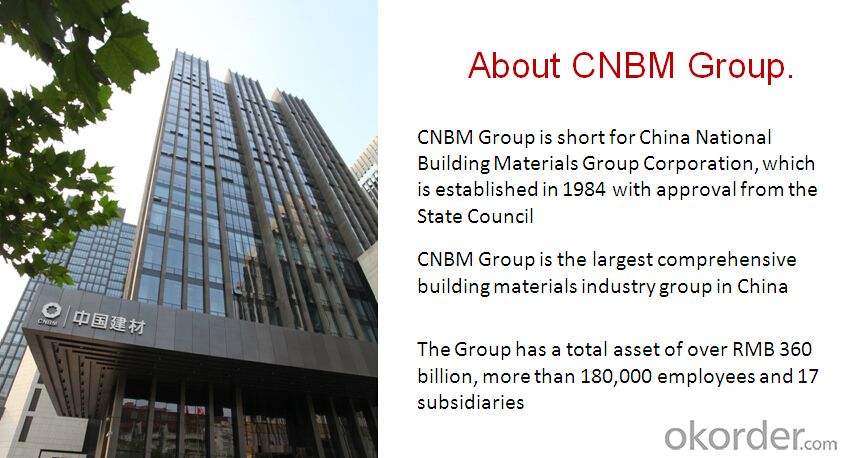
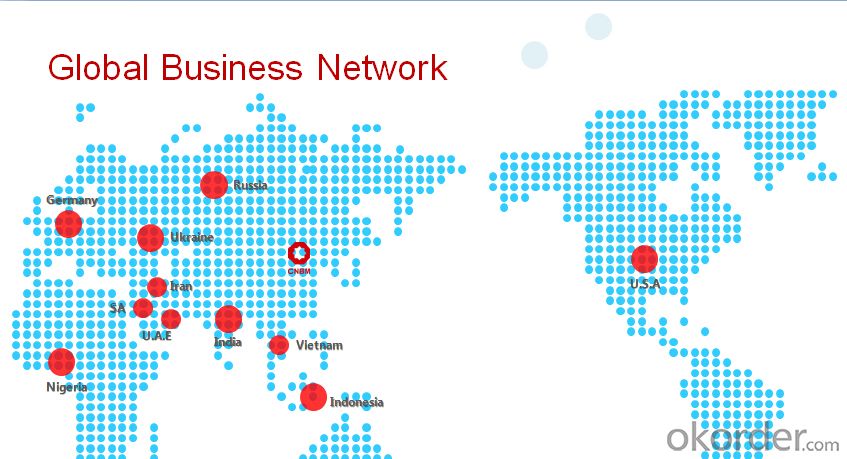
- Q: What are the common maintenance requirements for a solar inverter?
- The common maintenance requirements for a solar inverter include regular inspections to ensure proper functioning, cleaning of the unit and its components to remove dust and debris, checking and tightening of electrical connections, monitoring for any signs of damage or wear, and updating firmware or software as needed. Additionally, keeping the inverter's surrounding area clean and free from obstructions is also important for optimal performance.
- Q: Can a solar inverter work without batteries?
- Yes, a solar inverter can work without batteries. Solar inverters are devices that convert the direct current (DC) produced by solar panels into alternating current (AC) which can be used to power household appliances or fed into the electrical grid. While batteries can store excess energy produced by the solar panels, they are not necessary for the basic functioning of a solar inverter. The inverter can directly convert the DC power into AC power for immediate use without the need for energy storage.
- Q: Can a solar inverter be used with different tracking algorithms?
- Yes, a solar inverter can be used with different tracking algorithms. Solar inverters are designed to convert the direct current (DC) produced by solar panels into alternating current (AC) that can be used to power electrical devices. The tracking algorithm is responsible for optimizing the solar panel's position to maximize energy generation. Different tracking algorithms, such as fixed tilt, single-axis, or dual-axis tracking, can be implemented with a solar inverter to adapt to different solar panel orientations and environmental conditions.
- Q: What is the role of a power monitoring feature in a solar inverter?
- The role of a power monitoring feature in a solar inverter is to track and measure the amount of power generated by the solar panels. It provides real-time data on the energy production, allowing users to monitor the system's performance, identify any issues or inefficiencies, and optimize the overall energy output. This feature is crucial for ensuring the effective and efficient operation of a solar power system.
- Q: Can a solar inverter be used in regions with extreme weather conditions?
- Yes, a solar inverter can be used in regions with extreme weather conditions. However, it is important to choose an inverter that is designed and rated for the specific weather conditions of that region. For example, there are solar inverters available that are built to withstand high temperatures, extreme cold, humidity, and even harsh weather events such as hurricanes. It is crucial to consider the environmental factors and select an inverter that is suitable for the specific climate conditions to ensure optimal performance and longevity.
- Q: How does a solar inverter handle shading or partial panel obstructions?
- A solar inverter handles shading or partial panel obstructions by utilizing maximum power point tracking (MPPT) technology. This technology allows the inverter to constantly monitor each individual solar panel's output and adjust the voltage and current to maximize power production. If shading or obstructions occur on one or more panels, the inverter can dynamically optimize the output of the unshaded panels, ensuring maximum efficiency and power generation despite the partial loss of sunlight.
- Q: What are the key factors affecting the cost of a solar inverter?
- The key factors affecting the cost of a solar inverter include the capacity or size of the inverter, the efficiency of the technology used, the brand and quality of the product, the level of advanced features and functionalities, and the overall demand and supply in the market. Additionally, factors such as installation and maintenance costs, warranty and after-sales support, and government incentives or subsidies can also impact the overall cost of a solar inverter.
- Q: Can a solar inverter be used with a solar-powered heating system?
- Yes, a solar inverter can be used with a solar-powered heating system. The solar inverter converts the direct current (DC) generated by the solar panels into alternating current (AC) which can be used to power various appliances, including a heating system. This allows the solar panels to provide clean and renewable energy for heating purposes.
- Q: What is the role of a solar inverter in fault ride-through capability?
- The role of a solar inverter in fault ride-through capability is to help maintain the stability and reliability of the power grid during faults or disturbances. By detecting and responding to voltage and frequency variations caused by faults, the solar inverter can adjust its output and remain connected to the grid, ensuring continuous power supply. This capability is essential for grid stability and allows solar power systems to contribute to the overall reliability of the electrical network.
- Q: Can a solar inverter be used with a three-phase electrical system?
- Yes, a solar inverter can be used with a three-phase electrical system. In fact, many solar inverters are specifically designed to work with three-phase systems. They convert the direct current (DC) generated by the solar panels into alternating current (AC) that can be used to power three-phase electrical loads.
Send your message to us
Best 12V Solar Inverter Sine Wave Charger with Manual Bypass 5kW
- Loading Port:
- Tianjin
- Payment Terms:
- TT OR LC
- Min Order Qty:
- 10 pc
- Supply Capability:
- 10000 pc/month
OKorder Service Pledge
OKorder Financial Service
Similar products
Hot products
Hot Searches
Related keywords
